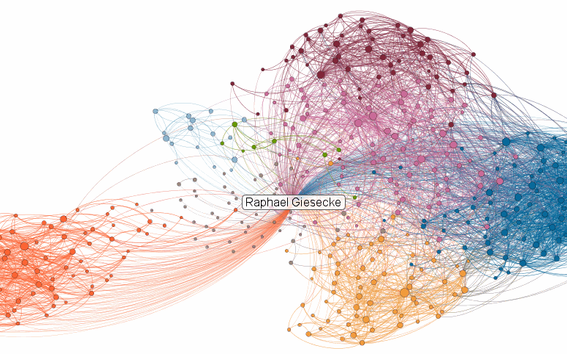Innovators like to connect people in their social networks

Raphael Giesecke’s dissertation How do Innovators Network? – The Innovation Capacity of Potentially Strong Ties in Individuals’ Social Networks shows the density of a typical innovator’s social network. The innovator is actively connecting different parts of his or her large network, transferring and sharing knowledge. On the other hand, innovators are also capable of pumping information from people in their networks.
“Innovators love diversity and they want to engage person by person, yet connecting only with people they like, and preferably have met”, Raphael Giesecke says.
Social network platforms enable innovators to develop and maintain large networks. They have a lot of trust even in weak and infrequent individual interactions and ties. Furthermore, innovators aim to cross boundaries in their network by actively connecting different parts of their networks.
A potentially strong tie
The study has a novel concept called the potentially strong tie.Although innovators' large networks are dense, most of their ties are weak and require little effort to maintain. However, due to the combination of local density, social network platform transparency, and the innovators' preference for real-life relationships, most of their ties are potentially strong. Such ties can be quickly and efficiently strengthened.
Raphael GieseckeInnovators might even try to build bridges between people in different echo chambers.
“The innovators might even force themselves into echo chambers where there are topics they do not like. They do this out of curiosity, to understand what and how other people think. Innovators might even try to build bridges between people in different echo chambers.”
Gatekeepers, on the other hand, are interested in keeping information for themselves or passing only selected information on. Any information that goes via gatekeepers is prone to stuck in the bottlenecks.
“Innovators don’t need or want gatekeeping power. They also know and accept the fact that they are different from others.”
Innovators often behave in an altruistic and non-conformist way at the same time, both sharing the ideas and helping the people without expecting anything in return. They do rarely conform to the opinion of majorities or authorities.
“Elon Musk is a well-known innovator, both connecting the people he thinks need to meet, and also successfully pumping information from people when he finds that useful.”
Raphael Giesecke will defend the dissertation on Friday 1 February 2019 at 12 noon at the Aalto University School of Science, lecture hall TU2, Maarintie 8, Espoo.
Further information:
Raphael Giesecke
Aalto University
Department of Industrial Engineering and Management
tel. +358 50 5234132
[email protected]
- Published:
- Updated:
Read more news

Get to know us: Associate Professor Maria Sammalkorpi
Sammalkorpi received her doctorate from Helsinki University of Technology 2004. After her defence, she has worked as a researcher at the Universities of Princeton, Yale and Aalto.
Aalto computer scientists in ICML 2024
Computer scientists in ICML 2024
Getting bacteria into line
Physicists use magnetic fields to manipulate bacterial behaviour